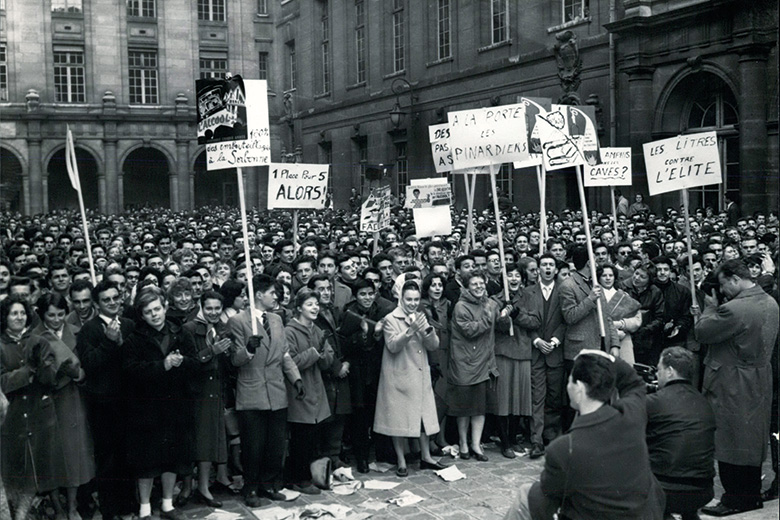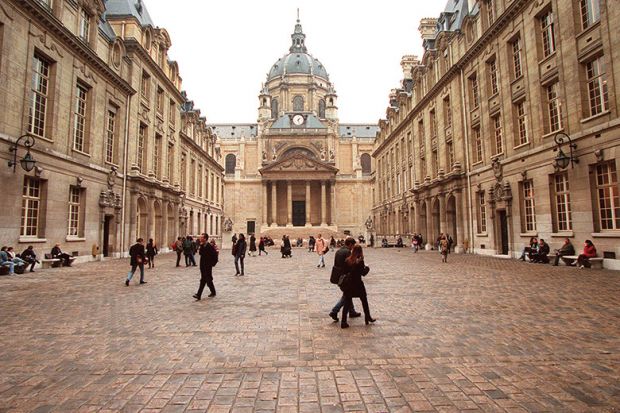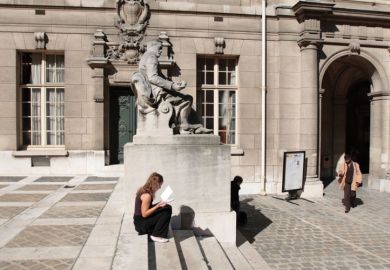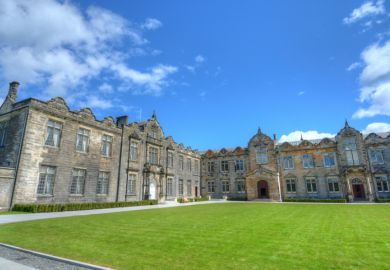Few universities loom as large in the public’s imagination as “the Sorbonne” – known more prosaically as the University of Paris.
Thanks to Victor Hugo, who romanticised its revolutionary students in Les Misérables, and the real-life undergraduates whose violent protests in 1968 captured the world’s attention, millions of people have dwelt upon the lives of the “Sorbonnards”, elevating them as icons of heroic idealism and Parisian glamour over the years.
That continuing hold on the popular imagination is somewhat remarkable given that the Sorbonne ceased to exist officially as a university in 1970. In response to the student unrest two years before, it was broken up into 13 universities, a structure that would better allow the rapid expansion of student numbers that followed.
Despite the relative success of many of these autonomous Paris universities over the years, identity and name recognition has been a problem. Most, until recently, were known largely by their numbers – such as Paris IV, Paris VII – making it difficult for international academics to tell them apart, while some of the names later adopted to provide a more distinctive brand proved rather unwieldy and difficult to pronounce – Pierre and Marie Curie University, for example, which was later shortened to UPMC. None commands the name recognition of “the Sorbonne” despite its disbandment almost 50 years ago – a factor that has contributed, many believe, to France's disappointing showing in world university rankings over the years.
That, however, might soon change when two of Paris’ most successful universities fully embrace the famous moniker. From January, UPMC, France’s largest medical and science university, will merge with Paris-Sorbonne University – Paris IV – which specialises in the humanities, the arts and languages – to form Sorbonne University, a recreation of the institution that existed from the 13th century until 1970.
Some might wonder if the merger is strictly necessary given the relative success of both institutions: UPMC is ranked joint 123rd in the latest Times Higher Education World University Rankings, while Paris IV scrapes into the top 200 at 196th. Others might question if combining two institutions of 35,000 and 24,000 students respectively will create an oversized university that will prove difficult to manage.
But Jean Chambaz, president of UPMC, insists that the merger is required for strong academic reasons, not just the clear benefits of reacquiring the Sorbonne brand.
“If we want to address the world’s grand challenges, we need to join researchers from the sciences and medicine to those working in the humanities,” Professor Chambaz told THE in Paris. “If we want our students to become more creative, then they also need to work across disciplines.”
Unlike some of the coalitions of universities, grandes écoles and research institutions encouraged by the Idex excellence initiative, which offers additional funding for more collaboration, this will be a full merger, explained Professor Chambaz, whose impressive modernist campus beside the Seine has just undergone a €1.7 billion (£1.5 billion) refurbishment.
“This is the first merger in Paris as we realised that we needed to rebuild a comprehensive university,” he explained. “We are already world-class in science and medicine, while Paris-Sorbonne is one of the best in humanities, so we now need an institution that mixes and encompasses all disciplines.”
The promise of additional funding under the Idex was not a major driving force behind the scheme, he insisted. The group of Sorbonne universities may have acquired an €800 million endowment from Idex, but it can spend only the interest yielded from this sum – about €27 million a year, he said.
“It is good to have these incentives but we have a budget of almost €1 billion, so it is the butter in the spinach,” he said.
A bigger driver for the merger, which was first discussed about 10 years ago, is to expand on the curriculum reforms that have seen UPMC offer many more dual honours undergraduate degree programmes in recent years, said Professor Chambaz.
This initiative has provided a richer student experience, and has also helped to cut the university’s dropout rates to below 40 per cent, he explained.
That compares favourably with the wider French sector, where just over a third of science students (36 per cent) complete within three years and only 50 per cent do so within four years, official figures show. France’s new higher education minister, Frédérique Vidal, recently announced a €450 million project to roll out similar curriculum reforms across other universities, which would allow students to switch from their major to their minor subject, rather than dropping out.
“This is not revolutionary outside France, but offering these types of degrees is quite different for a French university,” said Professor Chambaz.
“Many colleagues questioned whether this was a good idea or not, but students have voted with their feet and about 35 per cent now enter a course where they do a double major or a major and minor degree,” he said.
While Professor Chambaz believes that greater academic selection before entering university would do much to reduce France’s staggeringly high dropout rates, he welcomed Professor Vidal’s efforts to tackle this problem.
“She has said this failure rate is not acceptable and, if she succeeds, she will have solved one of the worst problems in French higher education,” he said.
Despite his enthusiasm for the new Sorbonne University and its wider benefits, it is ironically Professor Chambaz who could lose out from the merger. With just one president’s position available, he might not get the nod in the elections taking place in mid-November.
“We’re pleased to have the Sorbonne image, which is iconic for Paris,” he said, adding that “rebuilding the comprehensive university will not just help our institutions, but help us serve society”.
Whether the Sorbonne could eventually compete with the likes of Oxford and Harvard remains to be seen, but academics around the world can expect to hear a lot more from France’s most famous higher education brand in the next few years.
jack.grove@timeshighereducation.com

Sorbonne University: a new institution with a long history
Established around 1150, the University of Paris was one of the world’s first universities. Its unofficial name, the Sorbonne, derives from the College of Sorbonne, its theological school, which was founded a century later by Robert de Sorbon, the chaplain of Louis IX.
Its rules of self-government were laid out in the early 13th century, when it received its charter from King Philippe Auguste in 1200, and recognition from Pope Gregory IX in 1231. Despite this status, however, it was funded largely by private donors. Most students and teachers lived off private incomes, while scholarships were provided for poorer students.
By the end of the Middle Ages, the Sorbonne was recognised as the largest scientific and cultural centre in Europe, with about 20,000 students. It acquired a powerful patron in the 17th century when Cardinal Richelieu, Louis XIII’s chief minister, became its principal in 1622. He ordered a full-scale development of its buildings in Paris’s 5th arrondissement, although these building were replaced in the late 19th century.
The university became a secular organisation in the 18th century, but it was closed in 1792 after the French Revolution. Reopened by Napoleon Bonaparte in 1806, it struggled to recapture its influence following the emperor’s reorganisation of higher education, which included the creation of numerous elite grandes écoles and specialist institutions.
However, it enjoyed a renaissance in the late 19th and early 20th century, with its institutes on the front line of several major scientific studies, producing a number of Nobel prizewinners including chemists Pierre and Marie Curie and physicists Jean Perrin and Louis de Broglie.
Its student population tripled to 14,500 in the 1930s and it had more than 60,000 students in 1965 – prompting the creation of its Jussieu science campus, later to become Pierre and Marie Curie University.
Despite this expansion, dissatisfaction over student conditions led to protests in May 1968, which saw the Sorbonne occupied several times, becoming an international symbol of student protest. It was decided to divide the university into 13 separate universities across Paris, which have recently been asked to set up alliances to foster greater collaboration.
Jack Grove
POSTSCRIPT:
Print headline: Revolutionary return of the Sorbonne
Register to continue
Why register?
- Registration is free and only takes a moment
- Once registered, you can read 3 articles a month
- Sign up for our newsletter
Subscribe
Or subscribe for unlimited access to:
- Unlimited access to news, views, insights & reviews
- Digital editions
- Digital access to THE’s university and college rankings analysis
Already registered or a current subscriber?








